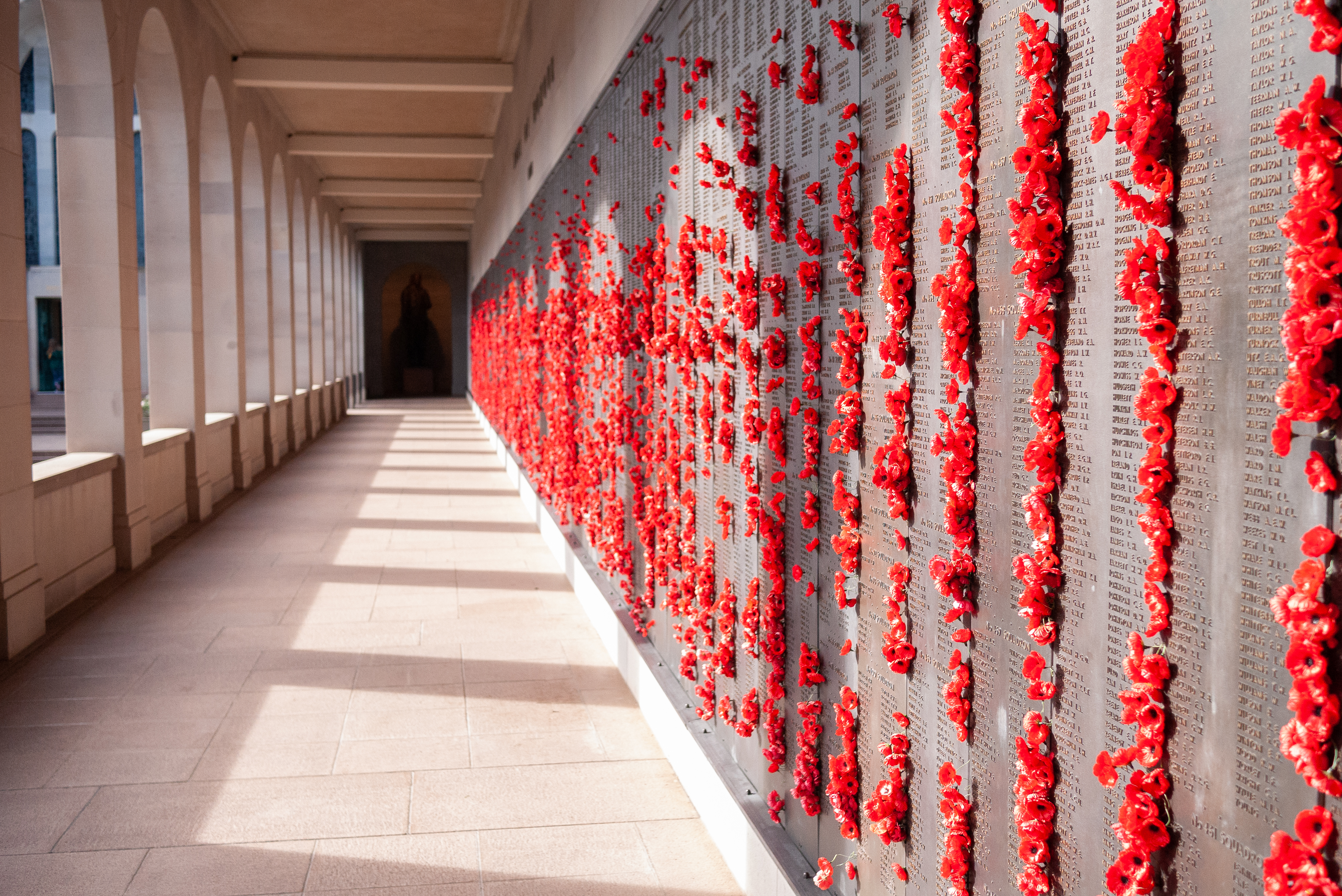Australian War Memorial is a monument and museum in Canberra. It honors Australians who have fought in wars. It also hosts a collection of historical artifacts and writings related to various Australian conflicts. Many elements of the memorial focus on World War I (1914-1918), which killed more than 60,000 Australian soldiers. The memorial is used in yearly ceremonies for Remembrance Day and Anzac Day, holidays that honor those who served or died in service to Australian war efforts.
The memorial is located at the base of Mount Ainslie, near Parliament House. It sits at the north end of the Anzac Parade opposite Lake Burley Griffin. The parade is an avenue of red gravel that is used in commemorative ceremonies. The memorial’s main building was designed in the architectural style known as Art Deco, characterized by geometric shapes and smooth forms. The building is primarily made of sandstone and is topped by a large copper dome.
One of the memorial’s central features is a shrine called the Hall of Memory. The shrine contains the tomb of an unknown soldier from World War I. The hall is decorated with large mosaics and stained-glass windows. The art was created by the Australian artist Napier Waller, who lost an arm while serving in World War I. Other significant sites at the memorial include the commemorative area, reflection pool, and sculpture garden. The commemorative area contains the Roll of Honour, a series of bronze plaques featuring the names of Australian service members who died because of their military service. Visitors place poppy flowers around the plaques of service members they wish to honor. The poppy flower is a famous symbol of remembrance, particularly of World War I, throughout the British Commonwealth. 
The idea of a museum to honor Australia’s participation in World War I originated with the Australian journalist Charles Bean in 1916. Bean and the Australian archivist John Treloar worked together to lead a new military department known as the Australian War Records Section. The department’s mission was to collect and preserve records of Australia’s involvement in the war. They were able to gather a large collection of such material by the end of the war in 1918. Treloar later served as the memorial’s director from 1920 to 1952.
The collection of art and artifacts was first opened to the public on Anzac Day in 1922. It did not have a permanent display space until 1941, when the main sandstone building opened as the Australian War Memorial. The original memorial building was designed by the Australian architects John Crust and Emil Sodersteen. Australia’s participation in World War II (1939-1945) inspired leaders of the memorial to expand its focus from World War I to include other conflicts involving Australians.
